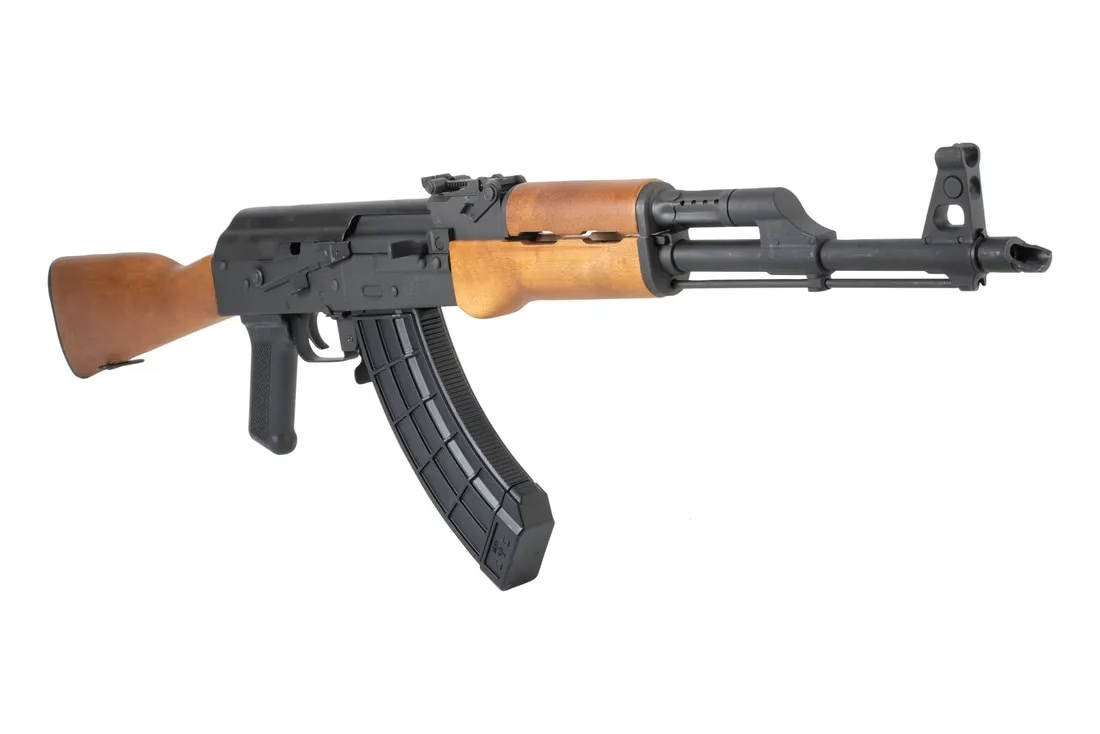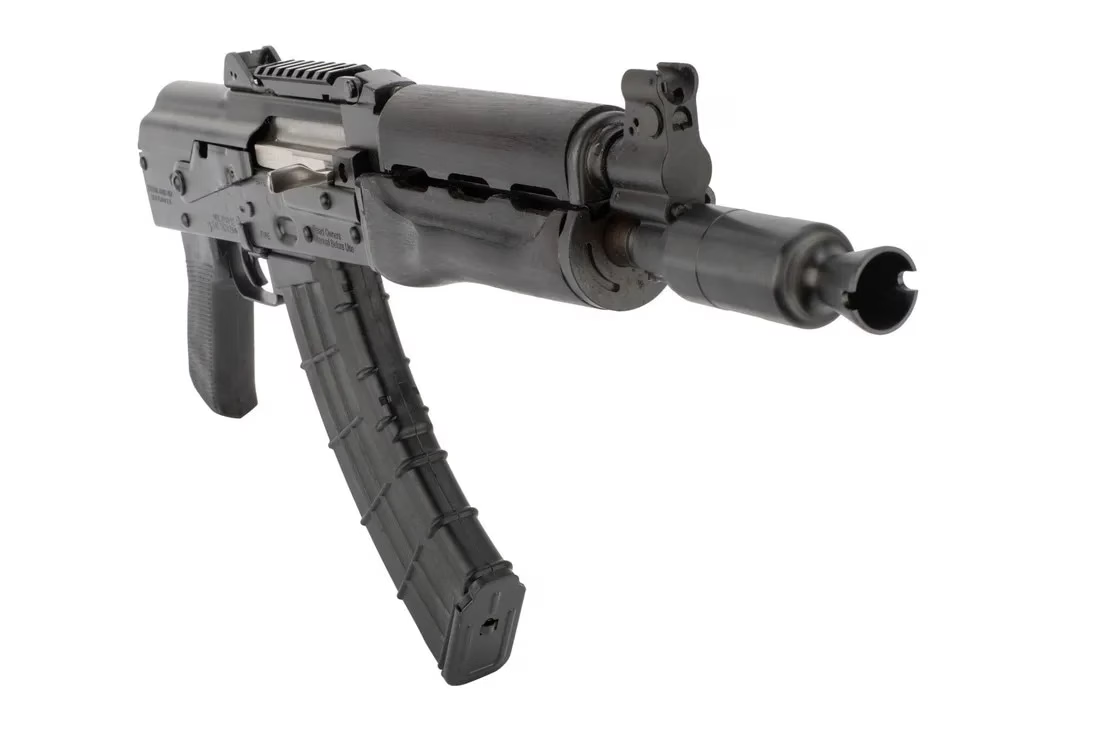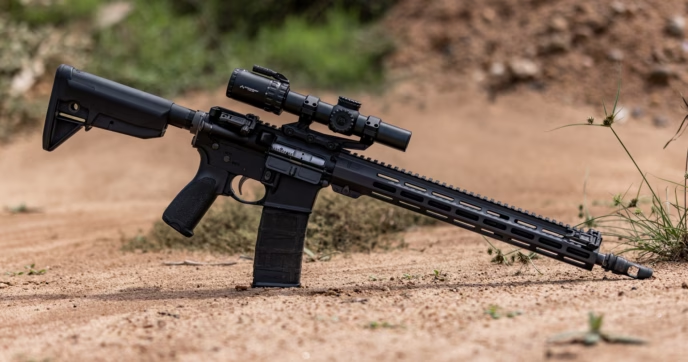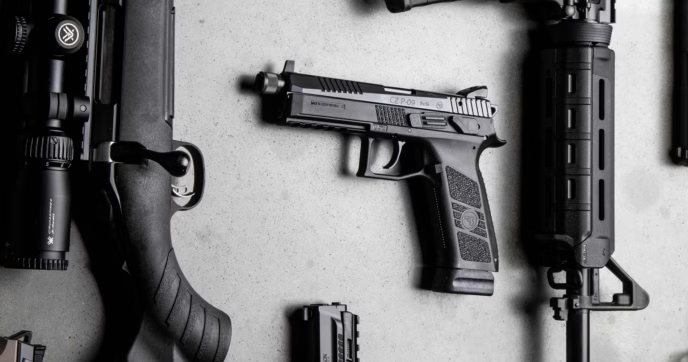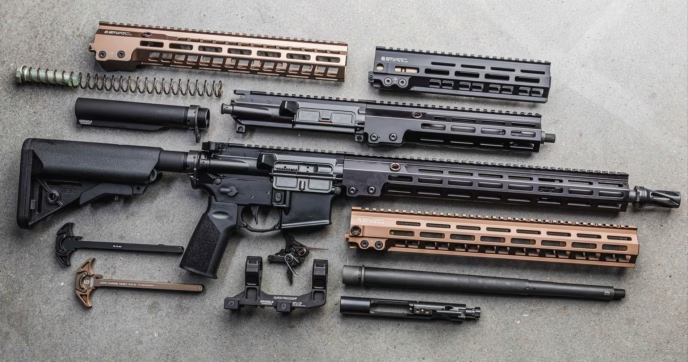Few firearms have reached the level of prestige and intrigue as the Kalashnikov family of rifles. For nigh on a century, they’ve been one of the world’s most prolific rifle systems, with it still being a more-than-viable choice in the 21st century despite its age.
Despite its popularity, the AK’s history is as confusing as it is intriguing, especially for those new to the platform. It’s often assumed that every AK is the same, but this is far from the truth, as a cursory search for ‘AK-47s’ will reveal all the different variants and regional patterns created over the years, making it a bit overwhelming when searching for one.
While the AK-47 we all know and love was originally created in Russia by Mikhail Kalashnikov, it was adopted and adapted by many countries following its inception. Not every nation that used an AK-pattern rifle kept the original Russian design, so now, there are dozens of different patterns and models based on the rifle’s country of origin.
Below, we’re taking a look at some of the most iconic regional AK models available. But, to keep things simple, we’ll primarily be focusing on mainline AK variants based on the original AK-47, AKM, and AK-74 models.
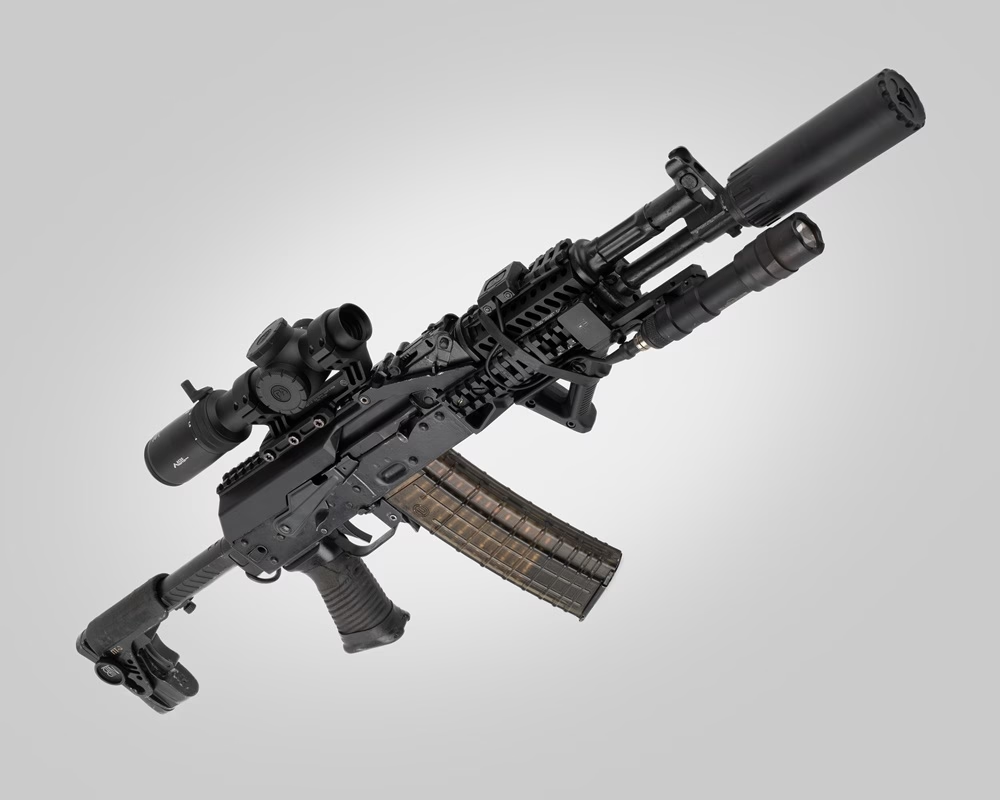
Eastern Bloc Origins
As said above, the AK-47 was a rifle that was developed by Mikhail Kalashnikov in 1947, hence the name: Avtomat Kalashnikova 47. Renowned for its reliability and simple operation, it was adopted by the Russian military, and has been the basis of several rifles, some of which are still in use/production to this day. A few years after its adoption, the design would be tweaked and refined, leading to several design changes and the beginning of growing confusion as to what an AK-47 is.
What most enthusiasts typically call an ‘AK-47’ isn’t actually a true AK-47. That name is reserved for the original Type 1, 2, and 3 AK-47 models. It wouldn’t be until 1959 that Kalashnikov would introduce the AKM, a modernized version of the original AK that set the standard for nearly all later AK Variants. The original AK-47 and AKMs success, and Soviet pressure, led to its adoption by other nations within the Soviet Union and other Eastern European nations.
However, while the Soviet Union heavily advocated for the AK’s adoption among nations in the Warsaw Pact, not every nation was necessarily keen on adopting the AK outright. Instead, some nations would rework the base design to better match their manufacturing infrastructure, and to circumvent Soviet licensing.
Regional AK Variants
Of all the nations that have crafted their own AKs throughout the years, Eastern Europe and the Balkan nations stand out as some of the most recognizable. For the most part, there weren’t too many deviations from the standard design, but there are a few that stand out. Nations such as Romania, Poland, Bulgaria, and Yugoslavia/Serbia are some of the most well-known AK producers, and they each have put their own spin on the AK design in one way or another. Even further, countries like China have produced their own AKs as well, with their rifles also having unique features.
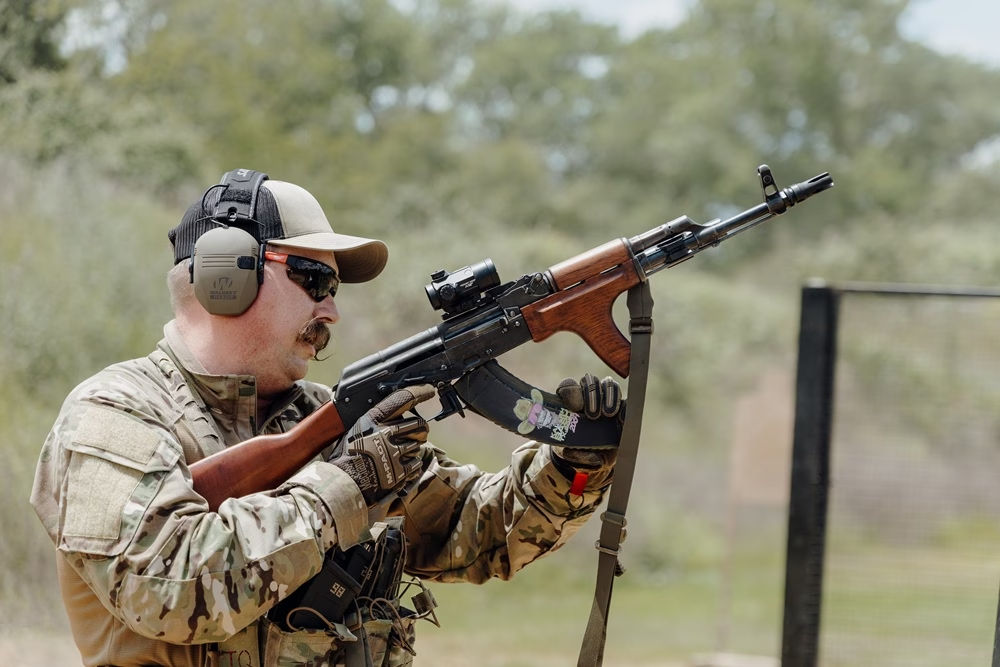
Romanian Pattern AKs
Historically, Romanian AKs haven’t differed too much from the standard AKM design. Produced in the Cugir Arms Factory, the Romanian PM md. 63 was the standard issue rifle for the Romanian Military and was essentially identical to the Russian AKMs. It wouldn’t be until the mid-1960s that the md. 63 would get its iconic laminate handguard, which featured an integrated wooden foregrip colloquially referred to as the ‘dong’ handguard. Later, they also produced the PM md. 65, which had an under-folder stock and a “reverse dong” handguard.
Romanian AK designs wouldn’t stray far from their Russian predecessors until the creation of the PA md. 86, better known as the AIMS-74. The AIMS-74 was developed after the Soviet Union introduced their new 5.45x39mm cartridge and AK-74 as a response to NATO’s adoption of 5.56x45mm. However, instead of copying the Russian AK-74, they developed their own rifle with a unique design that bore more resemblance to the traditional AKM. Like the AKM, it had a 45-degree gas block, used AKM furniture, and came with a fixed stock rear trunnion, though they were equipped with a side-folding wire stock. The only real difference was that the AIMS-74 used an upswept charging handle, and the Military version had a 3-round burst setting instead of full-auto.
American Availability
On the American Market, Romanian pattern AKs have remained as some of the most popular options available, mainly due to their continued importation from Century Arms. Century Arms AK models like the WASR-10 are, in essence, a semi-auto clone of the PM md 63—they’re even manufactured in the Cugir Arms Factory too. Additionally, they also produce shortened pistol and SBR length AK variants known as the Draco. Draco series AKs are available in an assortment of barrel lengths and make up most of Century Arms’ AK Pistol models.
Polish AK Variants
Another country known for their AKs is Poland. Poland adopted the AK platform in 1957 and began developing their own version of the Type 3 AK-47, redesignated as the PMK. Eventually, in 1966, they started producing their own version of the AKM under the polish designation “KbK AKM”, which were direct copies of the Russian AKM. Despite using Russian designs for their first production AKs, Poland would go on to use their own design in response to the creation of 5.45x39mm.
This new rifle was the wz. 88 Tantal, a rifle chambered in 5.45×39 and based off the Russian AK-74. Using a unique design, the Tantal came with an added safety selector switch on the left side of the receiver in addition to the standard AK-spec safety lever. Additionally, much like the PA md. 86/AIMS-74, it had a three-round burst feature instead of a full-auto function. Aside from these features, the Tantal retained a tang rear trunnion for fixed and wire folding stocks but had a redesigned handguard for better stability, and an enhanced muzzle device that served as both a muzzle brake and as a base launching for rifle grenades.
The Tantal’s reputation as a capable rifle system was well renowned, but after the fall of the Soviet Union, Poland joined NATO and no longer needed the Tantal rifle system. However, since they had all the infrastructure necessary to build them in mass, the Radom Arms Factory developed the wz. 96 Beryl. The Beryl was introduced as the Polish Army’s standard issue rifle in 1997 and was essentially an upgraded version of the Tantal. It used many of the same design elements, but featured an adjustable folding stock, a polymer handguard, an updated muzzle device, and it also had a removable upper picatinny rail above the dust cover for mounting optics. Additionally, these rifles were chambered in 5.56 NATO, but multiple versions of the Beryl were produced, such as one chambered in 7.62×39, and the Mini Beryl which used a shorter barrel.
American Availability
Historically, Polish AKs were imported to the U.S. for commercial sale for a brief time, though like the other AK variants we’ll mention later, they aren’t imported as much now due to restrictions and the fact that models like the Tantal are no longer in production. Following the implementation of such restrictions, rifles like the wz. 88 Tantal were imported in parts kits, but as recently as a few years ago, FB Radom was exporting civilian versions of their wz. 96 Beryl to select distributors for commercial sales. However, they have since ceased exporting these rifles to the states due to them shifting focus on their newer GROT rifle line.
All hope isn’t lost though if you want a Polish AK. Another brand, WBP, has picked up the slack left behind by FB Radom, and they now produce and export a wide array of different AK variants, that are all made in Poland, using premium components like forged front trunnions, and CHF chrome lined barrels.
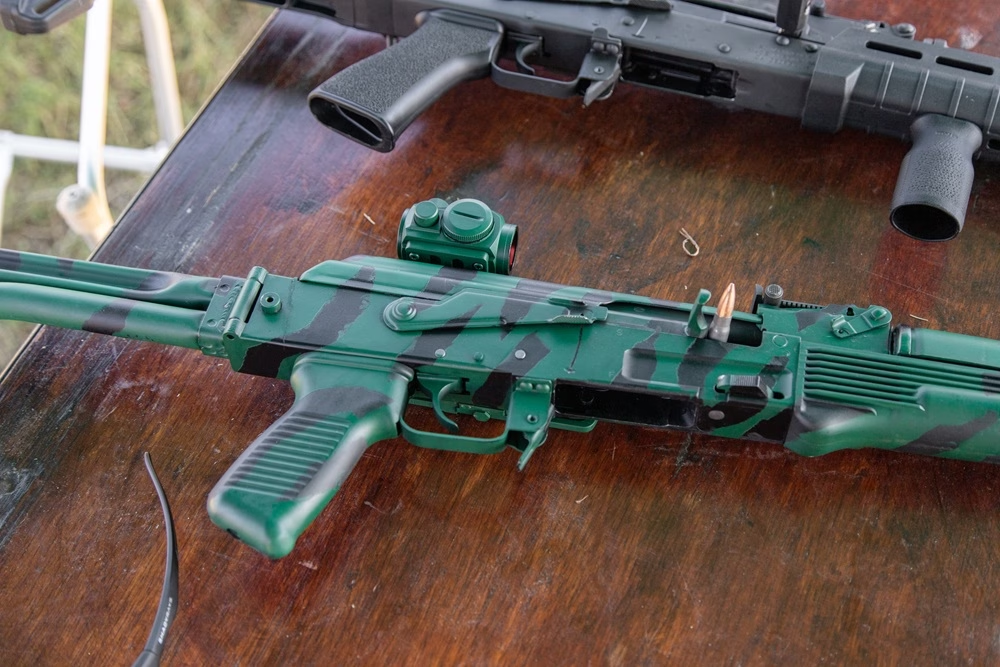
Bulgarian AKs
Amongst resolute AK enthusiasts, Bulgarian AKs are highly sought-after thanks to increased rarity and high quality. Historically, Bulgaria’s AK variants have been produced in their Arsenal AD manufacturing facility, which began producing Type 3 AK-47s in 1956 after getting the Soviet licensing required to do so. Since then, the Arsenal arms plant has continued to make several versions of the AK.
Their early AKK was essentially identical to the Type 3 AK-47, though they did alter the design slightly to include side-folding stocks for their Airborne and Vehicle units. Later in the 1970s, they began developing the AKKM, a stamped receiver rifle that was practically identical to the Soviet AKM. Around this time, they even adopted the AK-74 and its variants into their lineup as well, with them producing identical copies of the AK-74, AKS-74, and the highly sought-after AKS-74U, better known colloquially as the ‘Krink’ or ‘Krinkov’.
American Availability
Of all the countries mentioned thus far, Bulgaria has continued making milled AKs the longest, with that being reflected in their commercial offerings. Currently, Arsenal Inc., a licensed manufacturer and importer of Arsenal Co. rifles, continues to produce and sell the milled SAM series of rifles, which you can view as a modernized version of the Type 3 AK-47. While these rifles are still available, prior to shifting focus to manufacturing them exclusively, they were producing/importing various stamped AK variants under their SLR label, though these rifles are no longer in production.
That said, they still produce multiple variants of their SAM line, such as the SAM-7 and SAM-5 which are chambered in 7.62×39 and 5.56 NATO, respectively. So, you can essentially have a modern Type 3 in multiple AK-47 caliber options when opting for a SAM series rifle.
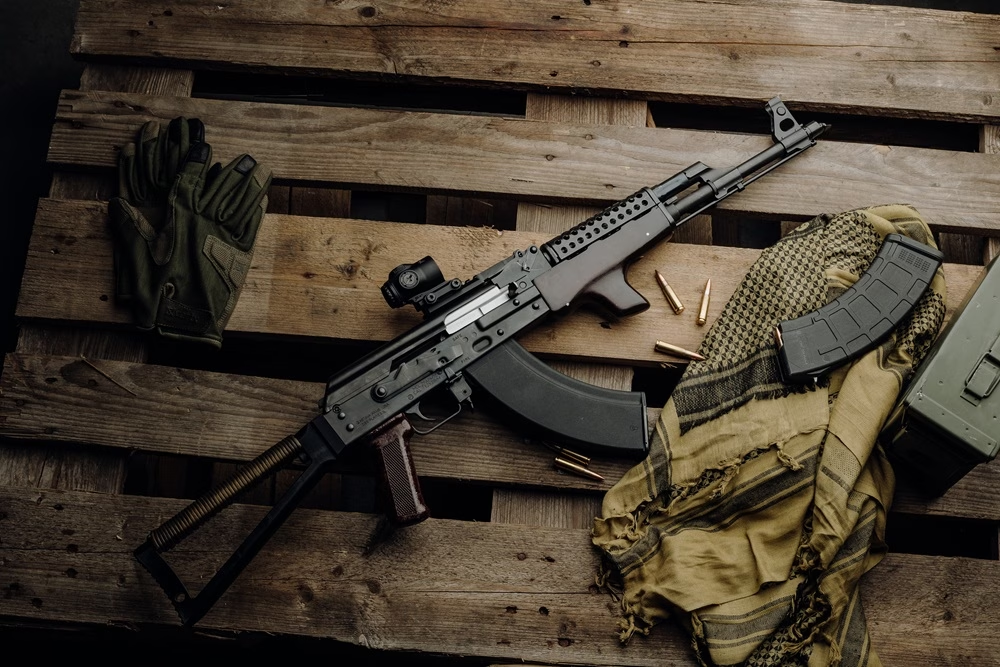
Yugoslavian/Serbian Pattern AKs
Yugoslavian/Serbian AKs are among some of the most popular options today thanks to their widespread availability. Produced at the Zastava Arms facility, rather than paying for Soviet licensing, the then Yugoslavian, now Serbian, government decided to create their own rifle design by reverse engineering the AK. They created a multitude of unique AK variants that are, arguably, some of the easiest to distinguish from other pattern AKs.
Initially, they got their start with the production of their first rifle, the M64, a prototype Zastava AK-47 model that served as the foundation for their later M70. The M70 series AKs were produced in a multitude of configurations, with earlier production models like the M70 and M70A having milled receivers, while their later M70B1 and M70AB2 were built on stamped ones.
Compared to Russian-spec AKMs, stamped M70s are quite different. For starters, instead of using 1mm receiver, they used a thicker 1.5mm receiver and had a different rear trunnion design where the stock would be bolted into it with one long screw. On select models, the gas block came with a grenade launching sight that would close off the gas port, allowing soldiers to switch to blanks which could launch rifle grenades. Because of this, the dust covers on these rifles came with a reinforced locking mechanism to prevent it from flying off the rifle when firing rifle grenades, but one of the most noticeable changes on Yugoslavian/Serbian AKs is on their handguard, as they feature 3 vents instead of two.
American Availability
While Romanian AKs like the WASR-10 series from Century Arms are among the most popular on the civilian market, modern offerings from Zastava are right up there with them. Zastava Arms continues to manufacture a vast assortment of AK-pattern rifles and AK pistol variants for the civilian market under their ZPAP line. While they still use 1.5mm receivers and keep niche quirks like their more secure dust covers and stock mounting systems, they’ve since beefed up their rifles by adding heavier barrels and bulged front trunnions for added durability
Their ZPAP M70 is one of the most readily available imported AKs on the market, making them a popular option amongst enthusiasts. And for those looking for an AK pistol or SBR, their ZPAP M92 and M85 stand tall as some of the most popular choices.
Chinese Adaptations
Aside from Russia and the Eastern European Nations, one of the most notable nations to field AK variants was China. Chinese pattern AKs were initially developed by the China North Industry Group Corporation, better known as Norinco, with their version of the AK being designated as the Type 56. These rifles were based on the Type 3 AK-47, but in the early to mid-1960s, they updated the design, building their rifles around a stamped receiver like the AKM.
Of the various AKM variants, the Type-56 is perhaps one of the most distinct. It looks strikingly like the original Russian AKM, but it has a few notable differences that make it easy to identify. Starting at the muzzle and working back, it came with a standard length 16.3-inch barrel, but earlier models didn’t come with any muzzle threads, though this would change on later models. Additionally, they used an enclosed, or hooded, front sight rather than an open one, and most notably, the Type-56 was commonly paired with an integrated folding bayonet.
Another significant alteration to the standard AKM design was the Type-56’s use of a double-hook disconnector, which allowed it to have a higher cyclic rate when fired in full-auto. Aside from this, there were some other minor alterations. For instance, their gas tubes came with extra ventilation holes, their rear sights ranged to 800 meters instead of 1,000, the front trunnions used a different rivet pattern, and they used a smooth dust cover instead of a ribbed one.
Chinese AK Availability
Prior to them being blocked by import restrictions, Chinese pattern AKs were quite common on the American Market. Their MAK 90 rifle was incredibly popular and was also offered in a sporterized version with a thumbhole stock. In addition to Norinco, AKs from Polytech were immensely popular as well, with them producing several AK variants chambered in various calibers and configurations.
Today, these AKs are not easy to find. Due to restrictions, they aren’t imported into the U.S. anymore, meaning they’re only available on the secondhand market, or in the form of parts kits.
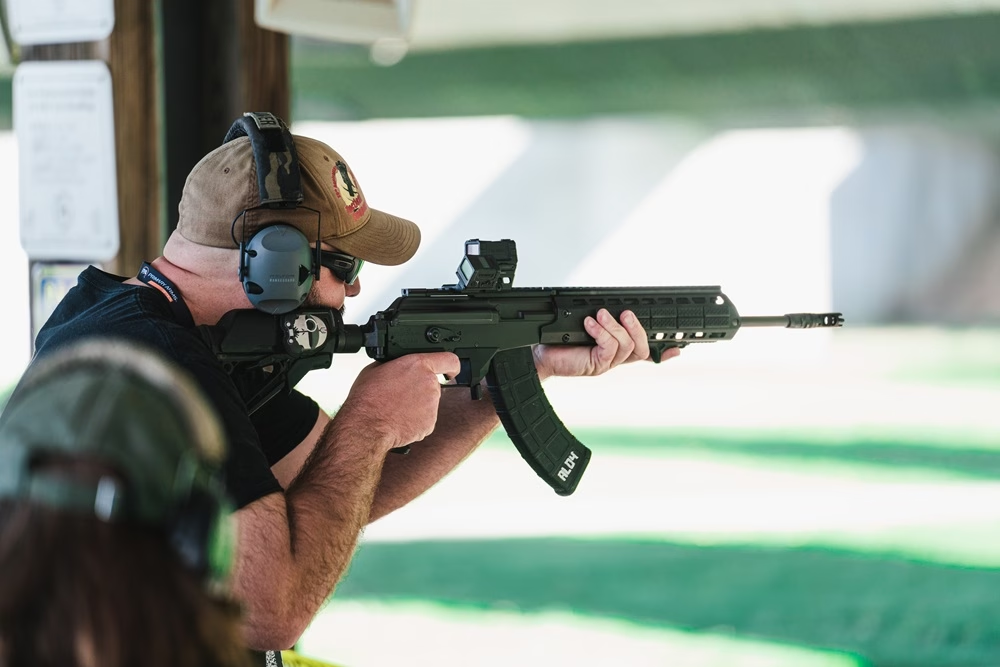
Honorable Mention: Galil
The Galil is a unique rifle hailing from Israel. It was developed by Israeli weapon designer, Yisrael Balashnikov, later known as Yisrael Galili, for the Israeli Military, and it has since been upgraded and fielded by many world militaries and police forces. While many assume that the Galil is just an Israeli clone of the AK, it shares more in common with the Finnish Valmet RK-62—in fact, the first Galil rifles ever produced were built on RK-62 receivers. Both the RK-62 and Galil use a more distinct design, but are widely considered AK-adjacent, as they all make use of a long-stroke gas piston system, use rock and lock magazines, and have similar silhouettes.
Today, the modern Galil ACE rifles produced by IWI US are one of the more popular AK alternatives, aside from the AR-15, of course. Currently in their second generation, the Galil ACE is available in a multitude of chamberings and barrel lengths, with their 5.56 NATO and 7.62×39 options being among their most popular.
Conclusion
Jumping into AKs can get confusing quickly. Over the years since its introduction, there have been several versions of the AK produced by various nations, many of which have tweaked the design to fit unique needs—and to get around Soviet licensing.
While the brief list above scratches the surface of all the intricacies of the AK platform, the incredible variety and rich history of it has made it one of the most intriguing rifle systems available in the modern market, especially in a market that’s dominated by rifles like the AR-15. Although there aren’t as many foreign AK models being imported due to restrictions, it’s not impossible to get some of the models mentioned above.
Select Romanian, Bulgarian, Polish, and Serbian AKs are still being imported, giving you a wide array of options to pick from. For some of the more niche models though, such as the Polish Tantal, Romanian AIMS-74, and the various Norinco and Polytech rifles from China, your best bet is to look for parts kits and a professional gunsmith to have your rifle built on an American receiver. Plus, if you want, you can always opt for something like the Galil too.
No matter which one you choose, they each represent a unique part of firearm history that’s easily configurable for a myriad of applications. Plus, if you want to bring your AK to the 21st century, they have an expansive parts aftermarket, one we cover in detail in our guide on Modernizing the AK.
